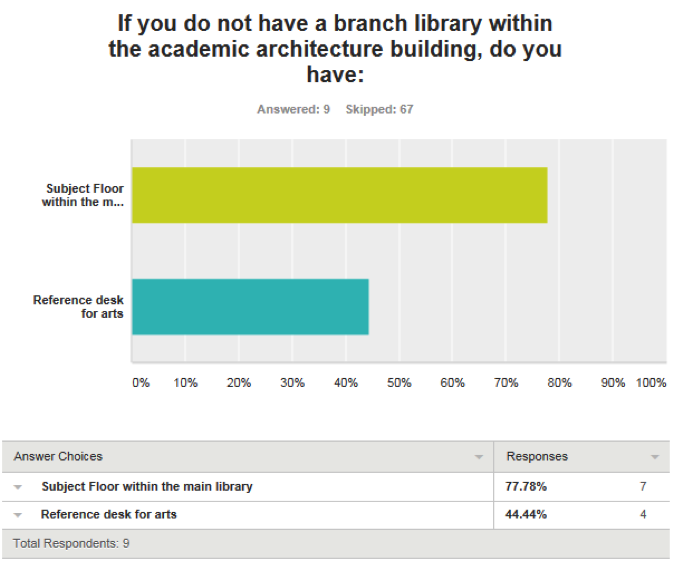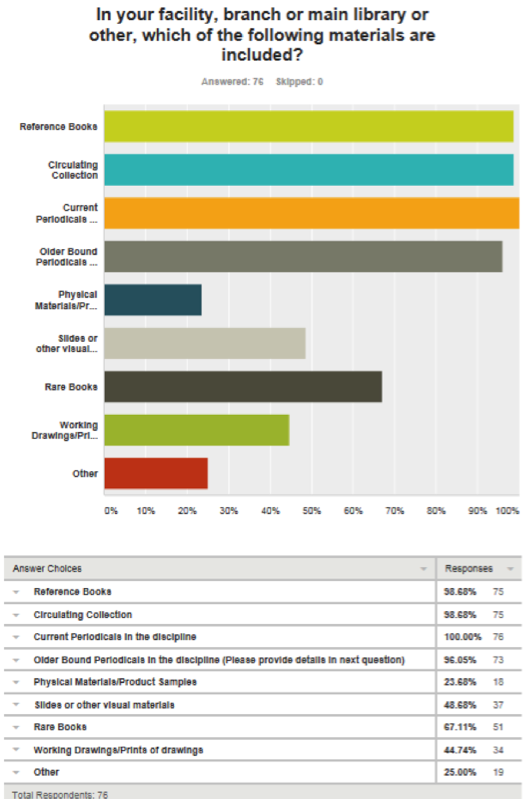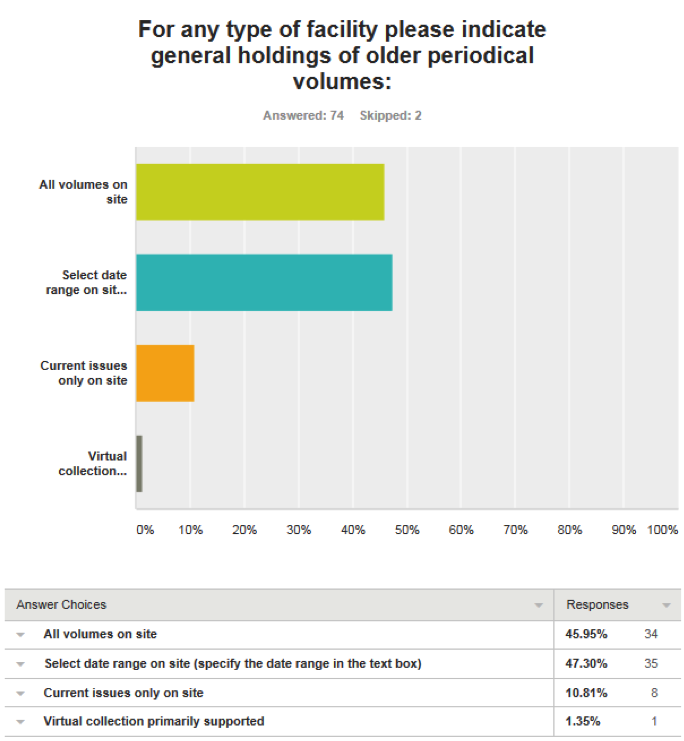Barbara Opar and Barret Havens, column editors
Column prepared by Barbara Opar
Specialized library collections are often treated differently from more general academic collections. There is rarely a separate reference desk, subject floor or branch for humanities or social sciences resources. Yet it is quite common to find a law library within the academic building and often operated by the actual law school. Adjacency and quick access to resources is crucial to that discipline. One often finds that art, music, engineering and architecture follow this same pattern.
The topic of branch libraries for architecture comes up frequently in discussions at conferences or on listservs. After some listserv discussion this past spring on both the Art Libraries Society of North America list as well as that of the Association of Architecture School Librarians, we decided to conduct a simple survey to gather the actual facts. The survey was done using SurveyMonkey and sent to the AASL, ARLIS/NA and ARLIS/NA Upstate lists. 10 basic questions were asked and respondents could add comments as they wished. Here is a summary of the results:
As you can see, of the 75 respondents, over 69 percent indicate that there is a library facility within the building that houses their school of architecture.
A branch library can be defined as either a standalone building or a part of a building devoted to library resources. In addition to housing the collection, there are on site services like circulation and (in general professional) reference assistance. For many of those with a branch library, the collection often covers both art and architecture. But facilities devoted only to architecture are also prevalent. Certain schools maintain a core collection for quick access in house with the rest of the collection housed elsewhere, often in the main campus library.
When no branch library exists, most libraries have either an entire subject floor within the main library or a portion of the floor devoted to the arts (art, architecture and sometimes either visual resources and/or music) with a subject reference desk. Here the patron can access print and non-print resources and receive specialized reference help.
Whatever type of facility exists, it does tend to house the broadest range of materials in the discipline. Rare books often remain apart.
Architecture libraries still maintain most periodicals holdings on site. For a number of libraries there is a date range of materials on site, ranging from 50 years to 5 years. Other libraries base on site collections on usage statistics.
Other questions in the survey focused on staffing levels including the educational background, number of staff as well as the responsibilities of the librarian(s). Many librarians responded that they cover more than one subject area. GIS services and related staffing have been added to certain facilities.
There is also no question that libraries are reviewing their organizations. But the majority of respondents indicate that a specialized facility is often conveniently located in or near the academic department.

 Study Architecture
Study Architecture  ProPEL
ProPEL 




